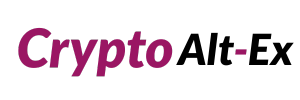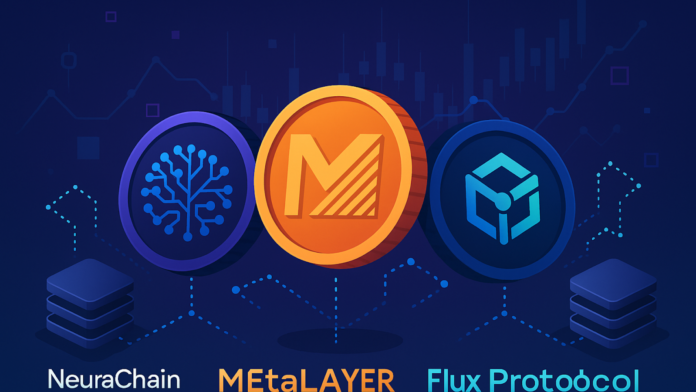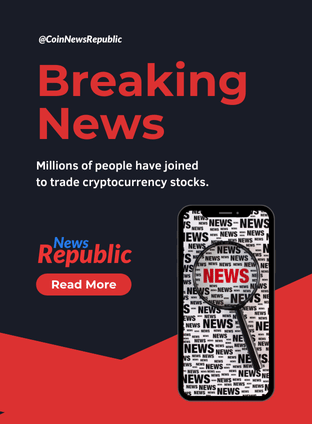- New tokens in 2025 are addressing the very issues Ethereum and Solana face today.
- Modular design, scalability, privacy, and user experience are driving adoption.
- These projects are more than hype—they’re a preview of blockchain’s next chapter.
The cryptocurrency space is entering a new era in 2025. With Ethereum still battling scalability challenges and Solana facing criticism over downtime, investors and developers are increasingly looking for the next big blockchain. The current market landscape presents an opportunity for emerging Layer-1 and Layer-2 projects to offer unique propositions in scalability, interoperability, and real-world utility. As interest in Web3, AI, and tokenized assets intensifies, new players are leveraging better consensus mechanisms and enhanced tokenomics to shake the dominance of incumbents.
The Criteria for a True Ethereum or Solana Rival
To rival Ethereum or Solana, a new token must address key blockchain limitations. These include high gas fees, network congestion, lack of interoperability, or centralization. Additionally, institutional readiness, developer incentives, and cross-chain compatibility are increasingly important metrics. Successful competitors must combine performance, usability, and decentralization into a cohesive ecosystem that attracts both developers and end users.
1. Monad (MON): Speed Meets EVM Compatibility
Monad is gaining traction as a high-speed Layer-1 blockchain with full Ethereum Virtual Machine (EVM) compatibility. With a reported 10,000 TPS and sub-second finality, Monad allows developers to port Ethereum dApps without rewriting code. Its novel pipelined architecture significantly reduces execution time. The protocol also offers parallel execution, positioning it as a Solana-like performer within an Ethereum framework. As scalability remains Ethereum’s Achilles’ heel, Monad could lure away both developers and users.
2. Zircuit (ZRC): Zero-Knowledge Scaling Layer
Zircuit is a zero-knowledge (ZK) rollup chain that blends security with scalability. Backed by venture firms and operating as a native Layer-2 chain, Zircuit supports private smart contracts. What sets it apart is its modular structure and EVM equivalence, enabling seamless integration with the Ethereum ecosystem. Developers receive gas rebates and custom execution environments, attracting a wave of early adopters. As privacy becomes central in DeFi, Zircuit’s privacy-preserving features could boost adoption rapidly.
3. Linera (LIN): Decentralized Cloud Infrastructure
Linera proposes a multithreaded blockchain architecture aimed at solving single-threaded bottlenecks seen in Solana and Ethereum. Designed by a former Meta engineer, Linera allows users to operate microchains in parallel, significantly enhancing throughput. Targeting enterprise-grade applications, Linera’s cloud-native infrastructure could make it the go-to chain for scalable dApps and cross-organizational collaboration. It’s not just about performance but enterprise viability.
4. Fuel Network (FUEL): Modular Execution Layer
Fuel distinguishes itself with a modular execution layer that separates consensus from execution. Built using the Sway programming language, Fuel offers optimized performance for DeFi applications. Its goal is to serve as the fastest execution layer for Ethereum, supporting a diverse range of apps that require fast finality and low fees. With Ethereum’s roadmap still under construction, Fuel’s head start in modular execution could be game-changing.
5. Berachain (BERA): Cosmos Meets DeFi
Berachain is a Layer-1 chain leveraging the Cosmos SDK and the CometBFT consensus engine. What makes it unique is its tri-token system: a governance token, a staking token, and a gas token. This architecture is designed to reduce speculative volatility while maximizing utility. Built specifically for DeFi and NFT applications, Berachain incentivizes protocol-owned liquidity, potentially solving long-standing liquidity fragmentation problems in DeFi.
6. Morph (MORPH): Modular L2 with Native Account Abstraction
Morph is a Layer-2 modular blockchain designed with a user-centric architecture. It integrates account abstraction and gasless transactions by default, offering a smoother UX for onboarding. Morph targets consumer applications in gaming and social media—markets underserved by current chains. With increasing interest in user-friendly Web3 apps, Morph positions itself as the go-to L2 for mass-market onboarding.
Why These Tokens Matter in the Bigger Picture
Each of these emerging tokens addresses critical gaps in the current ecosystem. Whether it’s Zircuit’s focus on privacy, Fuel’s approach to modularity, or Linera’s cloud-style execution model, these projects show that the blockchain space is no longer just about high throughput. It’s about usability, composability, developer tools, and long-term economic sustainability.
As Solana continues to push for faster performance and Ethereum leans into Layer-2 scaling, these newcomers offer hybrid solutions that could eventually absorb market share from both giants. Institutional interest, strong developer communities, and real-world partnerships will determine how high they rise.
What Investors Should Watch For
Early-stage investors should closely monitor tokenomics, team backgrounds, and audit reports before diving in. Some of these projects are still in testnet or early mainnet phases. Airdrops, staking incentives, and developer grants often signal strong community focus. Watching for exchange listings, TVL growth, and developer activity on GitHub can provide critical clues.
Conclusion
While Ethereum and Solana remain the industry’s heavyweights, 2025 is clearly the year new challengers emerge. The race is no longer just about transaction speed—it’s about the entire experience from development to deployment and end-user interaction. If these rising tokens can deliver on their promises, they may not just rival the incumbents—they might replace them in some niches.
The next blockchain champion might not be a better Ethereum or a faster Solana. It might be something entirely different.


